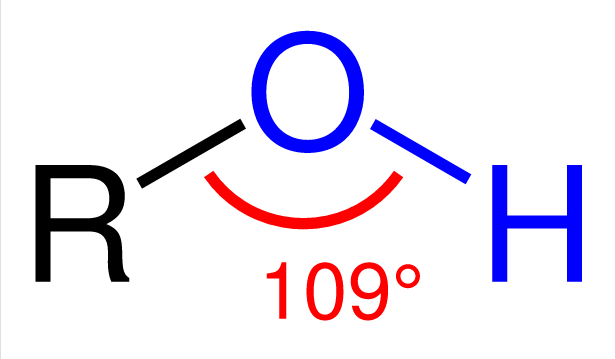October 23, 2015 report
Cobalt-ligand catalyst successfully converts carboxylic acids and esters into alcohols

(Phys.org)—Researchers report the discovery of a cobalt-ligand catalyst system that serves as a homogeneous catalyst for the hydrogenation of esters and carboxylic acids to alcohols. Ties J. Korstanje, Jarl Ivar van der Vlught, Cornelis J. Elsevier, and Bas de Bruin of Van't Hoff Institute for Molecular Sciences, University of Amsterdam demonstrate their catalyst's versatility in reducing a variety of bio-based carboxylic acids and esters under relatively mild conditions. Furthermore, their catalyst has a high turnover rate and has good selectivity. Their work appears in the recent issue of Science.
Biomass feedstock is an up-and-coming area of energy production that seeks to find an alternative to fossil fuels as a source of energy. Biomass, such as plants and algae, contain compounds that can be converted to energy bearing molecules, such as alcohols and hydrocarbons. One reaction that is of interest is the reduction of esters and carboxylic acids to alcohols. The traditional reagents for the hydrogenation of carboxylic acids and esters are aluminum hydride or borohydride, but these compounds are dangerous and tend to produce too much waste. Additional options for this reaction include heterogeneous catalysts that either require harsh reaction conditions or are not generally applicable to a variety of substrates, or homogenous catalysts that use expensive noble metals (e.g., ruthenium and iridium).
Hydrogenation reactions tend to be easier with esters than with carboxylic acids. Prior to the reported research, the best examples of homogenous catalysts for hydrogenating carboxylic acids were ruthenium/triphos and iridium/triphos systems. These metal-ligand systems, while successful, are prohibitively expensive for practical applications.
Korstanje, et al. developed a cobalt-ligand catalyst system by first identifying which cobalt precursors would react with the triphos ligand system to form a stable complex that can reduce methyl benzoate to benzyl alcohol and methanol. They found that commercially available Co(BF4)2•6H2O (10 mol%) with triphos at 100oC and 80 bar of H2 successfully converted methyl benzoate within five hours. They also tested their catalytic system with benzoic acid (5 mol%) and achieved full conversion to benzyl alcohol in four hours. Typically carboxylic acids are more difficult to convert than their corresponding carboxylic esters, but the shorter reaction time for benzoic acid indicates that this catalyst favorably converts carboxylic acids.
They then tested the versatility of their Co/triphos catalytic system using several esters and carboxylic acid substrates that would be of interest in biomass feedstock or pharmaceuticals. They observed the successful hydrogenation of sterically hindered tert-butylbenzoate and biomass product γ-valerolacetone as well as levulinic acid and succinic acid. They successfully hydrogenated a long-chain fatty acid and a triglyceride. They also found that their catalyst system tolerates several functional groups, such as chlorides, fluorides, trifluoromethyls, and hydroxides.
In an effort to test and optimize their catalyst system, they tried replacing the triphos ligand with other comparable ligand structure, but it yielded no catalytic activity, indicating that the triphos ligand was the optimal choice for this system. They tested other cobalt compounds, but found that none of them were noticeably better compared to Co(BF4)2•6H2O.
They also tested the catalyst system in the presence of added reagents. Adding acid or base to the reaction mixture did not affect the outcome of the hydrogenation reaction. Adding an additional reducing agent, such as zinc dust, did not have an appreciable effect on the hydrogenation reaction. Notably, the addition of certain Lewis acids, tetraphenylborate, and other agents killed the reaction, indicating that the anion plays a role in the reaction mechanism.
Korstanje, et al. elucidated the reaction mechanism by conducting partial poisoning studies using TEMPO (2,2,6,6-tetramethylpiperdine-1-oxyl) and TMTU (tetramethylthiourea). They conducted analyses using high resolution ESI-MS and in situ electron paramagnetic resonance studies to determine cobalt's oxidation state throughout the reaction. Their proposed reaction mechanism involves the key compound, Co(triphos)(κ2-alkanoate) as the lowest energy or resting state.
This research provides for a compelling catalytic system that is practically feasible compared to other catalysts because of the diversity of esters and carboxylic acid substrates that it successfully hydrogenates as well as its relatively mild reaction conditions. This Co/triphos catalyst has broad applications from biomass feedstock chemistry to pharmaceuticals.
More information: T. J. Korstanje et al. Hydrogenation of carboxylic acids with a homogeneous cobalt catalyst, Science (2015). DOI: 10.1126/science.aaa8938
ABSTRACT
The reduction of esters and carboxylic acids to alcohols is a highly relevant conversion for the pharmaceutical and fine-chemical industries and for biomass conversion. It is commonly performed using stoichiometric reagents, and the catalytic hydrogenation of the acids previously required precious metals. Here we report the homogeneously catalyzed hydrogenation of carboxylic acids to alcohols using earth-abundant cobalt. This system, which pairs Co(BF4)2·6H2O with a tridentate phosphine ligand, can reduce a wide range of esters and carboxylic acids under relatively mild conditions (100°C, 80 bar H2) and reaches turnover numbers of up to 8000.
Journal information: Science
© 2015 Phys.org



















